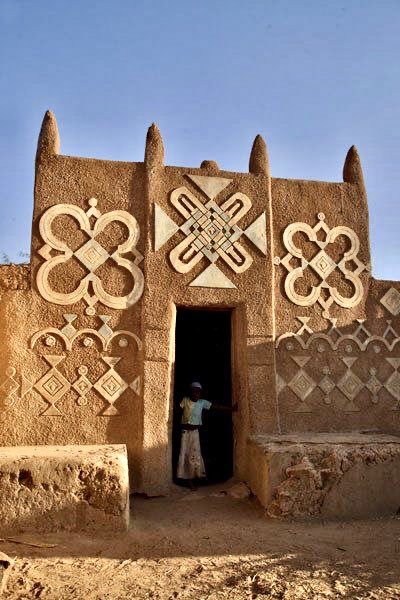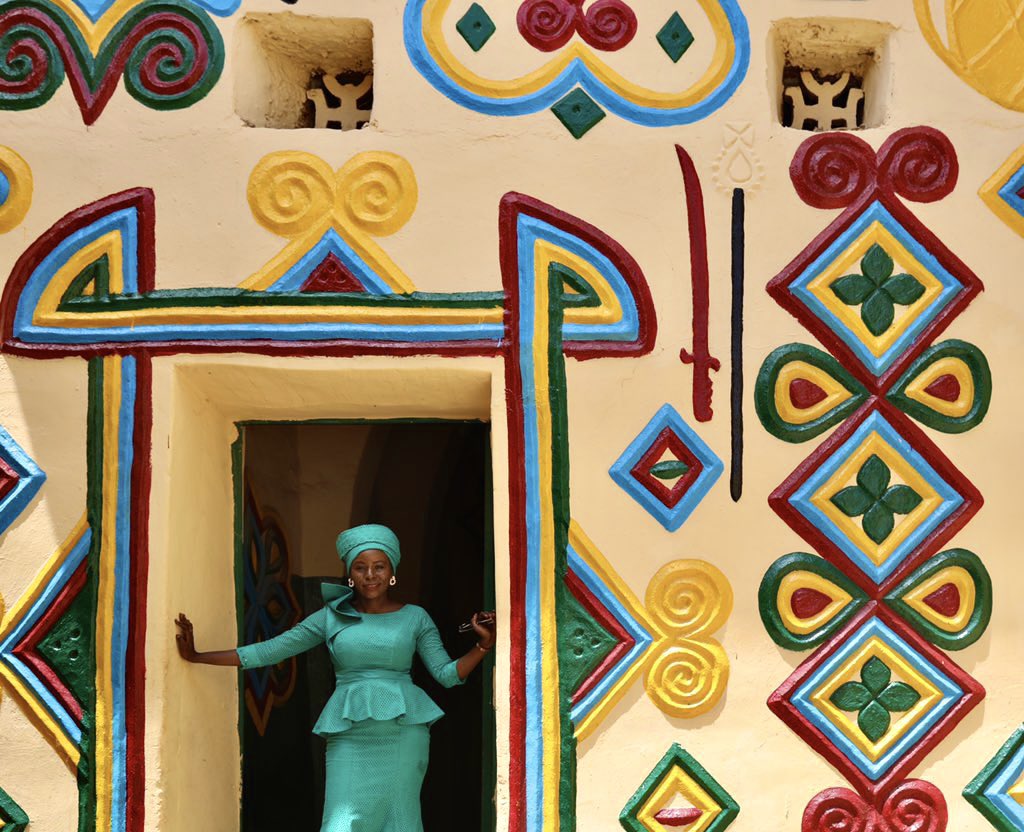Hausa architecture from Northern Nigeria, is perhaps one of the least known but most beautiful aspects of Hausa culture. It has been in existence for thousands of years & is characterised by bright, colourful, intricately engraved buildings
A thread on Hausa architecture…
A thread on Hausa architecture…

1/ Hausa architecture is the architecture of the Hausa people of Northern Nigeria. Hausa architectural forms include mosques, walls, houses, public buildings and gates.
Traditional Hausa Mosque
Traditional Hausa Mosque

2/The Hausa are the largest ethnic group in West and Central Africa made up of a diverse but culturally homogeneous people, predominantly based in the Sahelian and savannah areas of southern Niger and northern Nigeria. 

3/ Hausa traditional architecture is an integral part of how Hausa people construct a sense of interrelatedness with their physical environment. 

4/ The architecture of Hausa compound, which is the basic dwelling unit of an extended family, is an ordered hierarchy of spaces which adhere to an implicit cultural paradigm. 

5/ Hausa architecture is one influenced by Islam and results in a highly organized spatial structure that is used to express features of Hausa culture. 

6/ Most Hausa architecture was made of simple materials such as mud, stones, grasses, corn stalks and straws for thatch roofing. 

7/ The muds are made into tubali-sun-dried bricks, a mix of straw and mud is used to make concrete wall plastering. The entrance into the compounds is usually indoor arcs. 

8/ Hausa architecture is 100% sustainable and 100% non-toxic. The materials used are produced in a 100% sustainable manner. The technology and skills needed to build them is transferrable to the next generation 

9/ The traditional Hausa architecture can be categorised into three: calligraphy, surface design and ornamental. Some of such designs are still common and mostly found in the Emir palaces in various northern cities.
Traditional Hausa architecture, Kano, Nigeria
Traditional Hausa architecture, Kano, Nigeria

10/ Though few original earth structures remain, aside from a number of carefully preserved monuments and mosques, this method of building continues to be an enduring cultural practice among rural communities throughout the continent. 

11/ Traditionally, Hausa builders have considered the roof as the most challenging part of the construction, both owing to the technology required to support the structure and the decoration that is applied to it. 

12/ In Hausa traditional architectural decoration, the wall engravings are designed by traditional builders, these used a range of abstract and decorative motifs depending on their experience that include Hausa motifs and relief patterns as well as arabesque motifs 

13/ Hausa traditional builders, who like artisans are highly skilled at handwork & can draw out freehand patterns directly onto the surface of walls before carving out their designs. 

14/ The most common motifs used in Hausa designs are; the Dagi knot, the staff of office and the sword, & several abstract motifs, initially, these motifs would be larger & used moderately, but in the 20th century, new builders used smaller motifs that interlaced with each other. 

15/ Consequently, the complexity of a facade decoration usually demonstrates the wealth and social standing of the property’s owner. 

16/ A fine example of Hausa architecture is the flamboyant Emir's Palace within the ancient city of Zazzau (Zaria). 

18/ Another key element of Hausa architecture are the pinnacles, or Zankwaye. Zankwaye are a classic feature of the Hausa building, manifesting in various shapes and sizes, and giving the structures their characteristic form. 

19/ Like the horns of a bull, Zankwaye were originally reinforced vertical projections around the parapet wall of the roof, handily providing builders with a way to climb up onto the roof during construction or repairs. 

20/ The increasing interest in using modern building materials to make traditional Hausa constructions not only be for cultural continuity, but also as part of the movement towards sustainable architecture; creating buildings that are durable, affordable & culturally enriching 

Discover more about the art, heritage and history of Hausa architecture...
baytalfann.com/post/the-art-o…
baytalfann.com/post/the-art-o…
• • •
Missing some Tweet in this thread? You can try to
force a refresh























